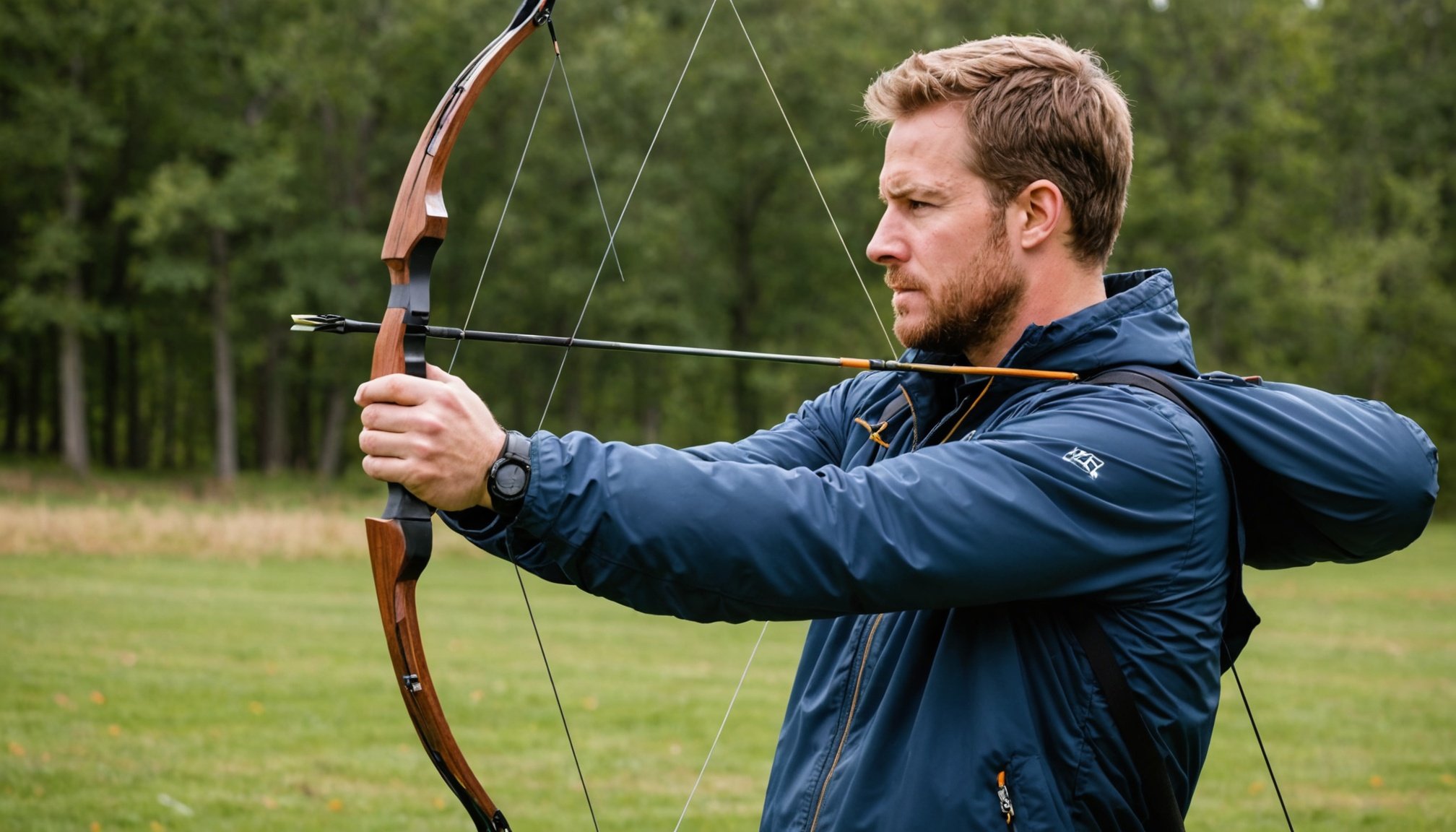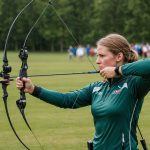Understanding Wind Effects on Archery
Wind plays a significant role in archery accuracy, with its impact on arrows being both challenging and intriguing. The trajectory of an arrow can be dramatically altered by various types of winds, such as crosswinds, headwinds, and tailwinds.
A crosswind, blowing from the side, can push the arrow off course, requiring the archer to adjust their aim. A headwind, on the other hand, slows the arrow down and affects its stability. Tailwinds can provide better speed but might lead to a dip in trajectory, affecting aerodynamic influence.
Also read : Mastering Mental Techniques: How Competitive Archers Can Stay Laser-Focused During Tournaments
Experts suggest that archers should hone their technique to adapt to these different wind conditions. This could involve altering stance, adjusting aim based on the expected deviation, or choosing arrows with different weight.
Practical adaptations could include:
Also read : Top lodging options for your stay in alpe d'huez
- Crosswind: Adjusting aim into the wind direction to compensate for drift.
- Headwind: Increasing the bow’s angle to maintain distance.
- Tailwind: Selecting heavier arrows to prevent overshooting.
By understanding and practicing these strategies, archers can maintain accuracy even amidst unpredictable weather, turning what seems like an obstacle into a factor of fascination and skill.
Essential Techniques for Shooting Accurately in Windy Conditions
Navigating windy conditions requires mastery of several techniques for windy archery. A primary strategy involves adjusting your aiming and release methods. It’s crucial to consider how wind affects your arrow’s trajectory. Start by aiming slightly upwind to counteract drift. Additionally, adapting your release to be smoother and timed with lulls in the wind can significantly improve shooting accuracy.
Incorporating wind shooting strategies also demands mental resilience. Maintaining focus amid gusty conditions ensures consistent performance. Visualisation techniques, such as imagining the arrow’s path before release, can bolster confidence. Breathing exercises are particularly effective for calming nerves, helping you concentrate on the shot.
Attention to your stance is fundamental when dealing with wind. Widening your stance slightly can increase stability, allowing for better control of the bow. Incorporating a slight bend in the knees can help absorb wind-induced sways, providing a solid base. These adjustments ensure that you’re grounded, which is vital for improving shooting accuracy.
Applying these techniques, combined with regular practice, will enhance your ability to perform in challenging conditions. Remember, mastering windy archery is both a physical and mental endeavour.
Equipment Adjustments for Windy Conditions
Navigating windy environments in archery requires strategic modifications to your gear. The choice of arrow can significantly impact performance. Opt for arrows specifically designed to tackle breezy conditions. Arrows with lower spine flexibility and higher grains-per-inch often fare better, reducing the drift caused by wind.
Bow tuning is another critical factor. Adjusting your bow’s draw weight can enhance stability, making it less susceptible to wind disruptions. Stabilizers are key components in this equation. Adding or removing weight on them can help counteract wind effects, providing a more balanced shot. A stabilizer with a side bar attachment might also prove beneficial, improving the bow’s overall balance and thus your control in gusty situations.
Equipping your arrows with the appropriate fletchings plays a vital role too. Larger fletchings, while increasing control, can be counterproductive in the wind. Instead, try smaller, more aerodynamic fletchings for improved performance. Additionally, consider rotating your fletchings to create a helical twist, aiding in maintaining arrow flight path accuracy.
Effectively integrating these archery gear modifications and wind-resistant equipment can substantially enhance your shot accuracy and consistency in challenging windy conditions.
Real-Life Examples and Case Studies
In the world of archery, success stories abound even in the face of challenging conditions like wind. Consider, for example, the renowned archer, Kim Woo-jin, who frequently competes under unpredictable weather conditions. His triumphs highlight the importance of mastering technique and selecting proper equipment. One key case study focused on a tournament where optimizing performance in wind became crucial. By adjusting bow weight and practising with different arrow types, Woo-jin demonstrated resilience and adaptability, proving pivotal to his success.
Successful archers often rely on their experienced approach to decision-making. They’ve learned the hard way that abandoning predetermined mindsets in favour of flexible strategies is beneficial. Common mistakes, such as underestimating the impact of wind direction, can drastically alter outcomes. Learning from these experiences is invaluable.
Moreover, structured analysis of competition outcomes reveals that attention to detail in equipment choice can mean the difference between winning and losing. For instance, many archers improved precision by selecting arrows designed specifically for wind resistance. Those who closely studied archery success stories and applied the lessons gained could optimize their performance significantly, even when confronted with daunting weather challenges.
Visual Aids and Demonstrations
Visual resources are crucial for mastering archery, especially when considering the impact of wind on arrow flight. Instructional archery videos are plentiful and serve as excellent tools for demonstrating techniques. These videos often provide visual step-by-steps that are beneficial for visual learning in archery. Witnessing the correct form and adjustments firsthand helps in understanding complex elements like wind resistance.
Moreover, archery diagrams offer valuable insights by portraying the mechanics of wind effects. Diagrams visually break down the trajectory changes an arrow may undergo when encountering different wind patterns. These illustrations are particularly effective for learners who benefit from seeing theoretical concepts in a visual context.
To further develop skills, consider creating personal visual aids. This can be done by documenting one’s own shot performance through videos or diagrams. Recording and analysing your practice sessions will help in tracking improvements and identifying areas needing more focus. Using these tools routinely can sharpen not only your technical abilities but also your analytical skills. Through consistent utilisation of these resources, archers can better predict and adapt to environmental conditions, ultimately advancing their proficiency in the sport.











